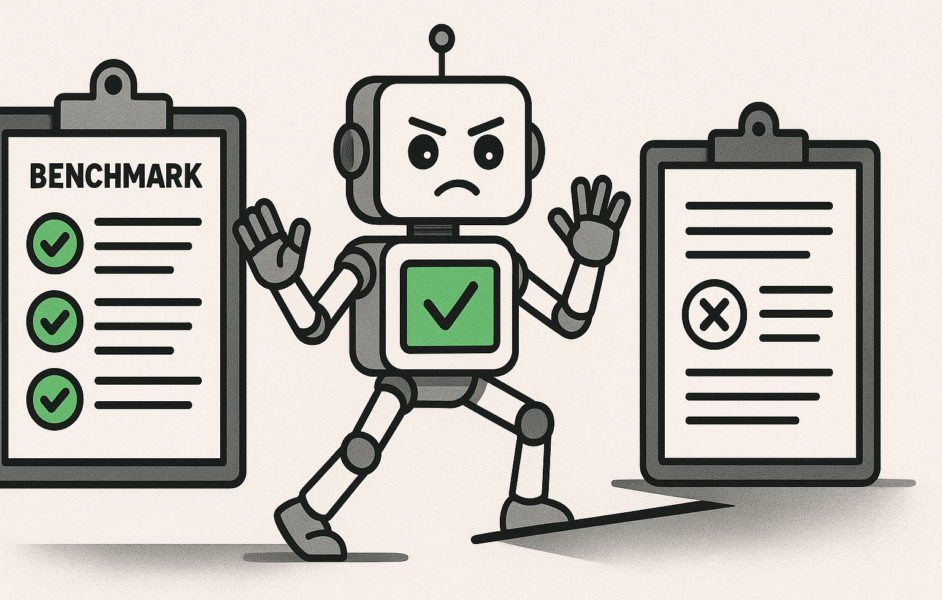If you have been following AI these days, you have likely seen headlines reporting the breakthrough achievements of AI models achieving benchmark records. From ImageNet image recognition tasks to achieving superhuman scores in translation and medical image diagnostics, benchmarks have long been the gold standard for measuring AI performance. However, as impressive as these numbers may be, they don’t always capture the complexity of real-world applications. A model that performs flawlessly on a benchmark can still fall short when put to the test in real-world environments. In this article, we will delve into why traditional benchmarks fall short of capturing the true value of AI, and explore alternative evaluation methods that better reflect the dynamic, ethical, and practical challenges of deploying AI in the real world.
The Appeal of Benchmarks
For years, benchmarks have been the foundation of AI evaluation. They offer static datasets designed to measure specific tasks like object recognition or machine translation. ImageNet, for instance, is a widely used benchmark for testing object classification, while BLEU and ROUGE score the quality of machine-generated text by comparing it to human-written reference texts. These standardized tests allow researchers to compare progress and create healthy competition in the field. Benchmarks have played a key role in driving major advancements in the field. The ImageNet competition, for example, played a crucial role in the deep learning revolution by showing significant accuracy improvements.
However, benchmarks often simplify reality. As AI models are typically trained to improve on a single well-defined task under fixed conditions, this can lead to over-optimization. To achieve high scores, models may rely on dataset patterns that don’t hold beyond the benchmark. A famous example is a vision model trained to distinguish wolves from huskies. Instead of learning distinguishing animal features, the model relied on the presence of snowy backgrounds commonly associated with wolves in the training data. As a result, when the model was presented with a husky in the snow, it confidently mislabeled it as a wolf. This showcases how overfitting to a benchmark can lead to faulty models. As Goodhart’s Law states, “When a measure becomes a target, it ceases to be a good measure.” Thus, when benchmark scores become the target, AI models illustrate Goodhart’s Law: they produce impressive scores on leader boards but struggle in dealing with real-world challenges.
Human Expectations vs. Metric Scores
One of the biggest limitations of benchmarks is that they often fail to capture what truly matters to humans. Consider machine translation. A model may score well on the BLEU metric, which measures the overlap between machine-generated translations and reference translations. While the metric can gauge how plausible a translation is in terms of word-level overlap, it doesn’t account for fluency or meaning. A translation could score poorly despite being more natural or even more accurate, simply because it used different wording from the reference. Human users, however, care about the meaning and fluency of translations, not just the exact match with a reference. The same issue applies to text summarization: a high ROUGE score doesn’t guarantee that a summary is coherent or captures the key points that a human reader would expect.
For generative AI models, the issue becomes even more challenging. For instance, large language models (LLMs) are typically evaluated on a benchmark MMLU to test their ability to answer questions across multiple domains. While the benchmark may help to test the performance of LLMs for answering questions, it does not guarantee reliability. These models can still “hallucinate,” presenting false yet plausible-sounding facts. This gap is not easily detected by benchmarks that focus on correct answers without assessing truthfulness, context, or coherence. In one well-publicized case, an AI assistant used to draft a legal brief cited entirely bogus court cases. The AI can look convincing on paper but failed basic human expectations for truthfulness.
Challenges of Static Benchmarks in Dynamic Contexts
-
Adapting to Changing Environments
Static benchmarks evaluate AI performance under controlled conditions, but real-world scenarios are unpredictable. For instance, a conversational AI might excel on scripted, single-turn questions in a benchmark, but struggle in a multi-step dialogue that includes follow-ups, slang, or typos. Similarly, self-driving cars often perform well in object detection tests under ideal conditions but fail in unusual circumstances, such as poor lighting, adverse weather, or unexpected obstacles. For example, a stop sign altered with stickers can confuse a car’s vision system, leading to misinterpretation. These examples highlight that static benchmarks do not reliably measure real-world complexities.
-
Ethical and Social Considerations
Traditional benchmarks often fail to assess AI’s ethical performance. An image recognition model might achieve high accuracy but misidentify individuals from certain ethnic groups due to biased training data. Likewise, language models can score well on grammar and fluency while producing biased or harmful content. These issues, which are not reflected in benchmark metrics, have significant consequences in real-world applications.
-
Inability to Capture Nuanced Aspects
Benchmarks are great at checking surface-level skills, like whether a model can generate grammatically correct text or a realistic image. But they often struggle with deeper qualities, like common sense reasoning or contextual appropriateness. For example, a model might excel at a benchmark by producing a perfect sentence, but if that sentence is factually incorrect, it’s useless. AI needs to understand when and how to say something, not just what to say. Benchmarks rarely test this level of intelligence, which is critical for applications like chatbots or content creation.
AI models often struggle to adapt to new contexts, especially when faced with data outside their training set. Benchmarks are usually designed with data similar to what the model was trained on. This means they don’t fully test how well a model can handle novel or unexpected input —a critical requirement in real-world applications. For example, a chatbot might outperform on benchmarked questions but struggle when users ask irrelevant things, like slang or niche topics.
While benchmarks can measure pattern recognition or content generation, they often fall short on higher-level reasoning and inference. AI needs to do more than mimic patterns. It should understand implications, make logical connections, and infer new information. For instance, a model might generate a factually correct response but fail to connect it logically to a broader conversation. Current benchmarks may not fully capture these advanced cognitive skills, leaving us with an incomplete view of AI capabilities.
Beyond Benchmarks: A New Approach to AI Evaluation
To bridge the gap between benchmark performance and real-world success, a new approach to AI evaluation is emerging. Here are some strategies gaining traction:
- Human-in-the-Loop Feedback: Instead of relying solely on automated metrics, involve human evaluators in the process. This could mean having experts or end-users assess the AI’s outputs for quality, usefulness, and appropriateness. Humans can better assess aspects like tone, relevance, and ethical consideration in comparison to benchmarks.
- Real-World Deployment Testing: AI systems should be tested in environments as close to real-world conditions as possible. For instance, self-driving cars could undergo trials on simulated roads with unpredictable traffic scenarios, while chatbots could be deployed in live environments to handle diverse conversations. This ensures that models are evaluated in the conditions they will actually face.
- Robustness and Stress Testing: It’s crucial to test AI systems under unusual or adversarial conditions. This could involve testing an image recognition model with distorted or noisy images or evaluating a language model with long, complicated dialogues. By understanding how AI behaves under stress, we can better prepare it for real-world challenges.
- Multidimensional Evaluation Metrics: Instead of relying on a single benchmark score, evaluate AI across a range of metrics, including accuracy, fairness, robustness, and ethical considerations. This holistic approach provides a more comprehensive understanding of an AI model’s strengths and weaknesses.
- Domain-Specific Tests: Evaluation should be customized to the specific domain in which the AI will be deployed. Medical AI, for instance, should be tested on case studies designed by medical professionals, while an AI for financial markets should be evaluated for its stability during economic fluctuations.
The Bottom Line
While benchmarks have advanced AI research, they fall short in capturing real-world performance. As AI moves from labs to practical applications, AI evaluation should be human-centered and holistic. Testing in real-world conditions, incorporating human feedback, and prioritizing fairness and robustness are critical. The goal is not to top leaderboards but to develop AI that is reliable, adaptable, and valuable in the dynamic, complex world.


